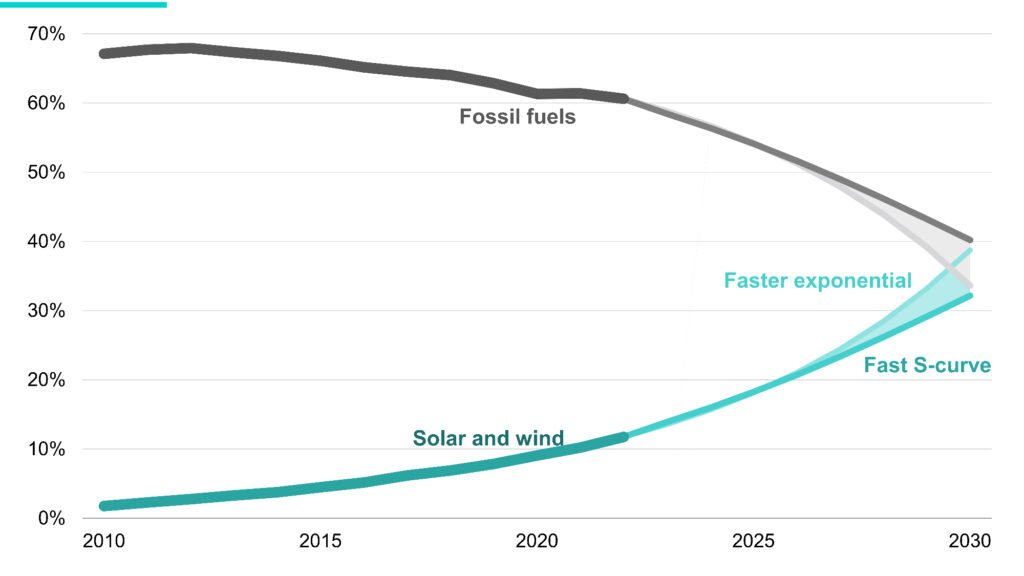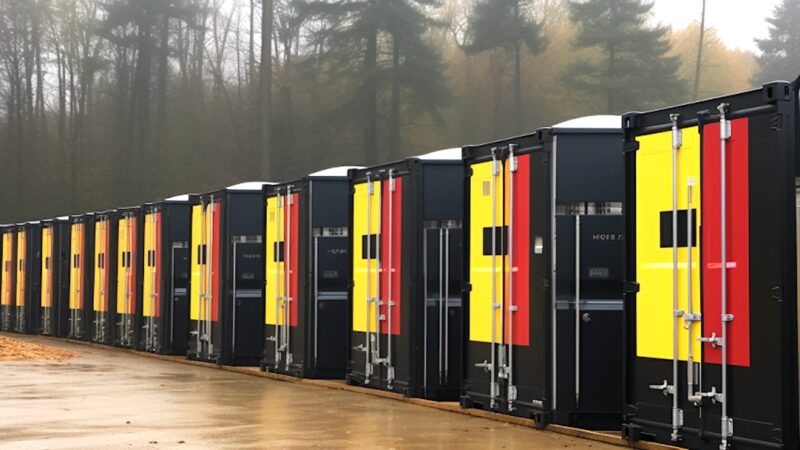Vad händer
Kontext
Åtta länder, med väldigt olika förutsättningar, har redan byggt mer solenergi och vindkraft än vad som behövs för att begränsa uppvärmningen till 1,5 grader vilket visar att det är ett realistiskt mål.
Based on the forecasts, this would see solar and wind generate 12,000-14,000TWh by 2030, 3-4 times higher compared with 2022 levels. It would also surpass recent calls running up to COP28 for a tripling of total renewable energy capacity by 2030.
RMI: Renewable energy deployment surge puts global power system on track for the IEA’s ambitious net-zero pathway
Efterfrågan på kol, olja och gas kommer samtidigt minska med upp till 30 procent på grund av solenergi och vindkraft vars låga priser kommer konkurrera ut de fossila bränslen.
Solar, wind, and batteries have been following a typical path for new technology, the RMI report says. Learning curves lead to falling prices, which in turn lead to rapid growth in new capacity. New solar and battery capacity, policy targets, the momentum of change, and the logic of S curves all point to continued exponential growth in solar and wind generation for the rest of this decade at 15%–20% a year.
Clean Technica: One-Third Of All Electricity Will Come From Renewables By 2030

Vad har det för betydelse
RMI betonar att detta är en uppmaning till människor att agera. Samhällen behöver
- bygga ut sina elnät
- ändra tillståndsprocesserna
- utveckla regelverken
- utveckla marknadssystemen
- öka etableringen av fri energi på södra halvklotet
De bedömer även att priset på solenergi kommer fortsätta falla och halveras till 2030.
This exponential growth has put the electricity system at a global tipping point — where the transition away from fossil fuels has become hard to reverse, suggesting fossil fuel demand has peaked in the electricity sector and will be in freefall by the end of the decade.
RMI: Renewable energy deployment surge puts global power system on track for the IEA’s ambitious net-zero pathway





